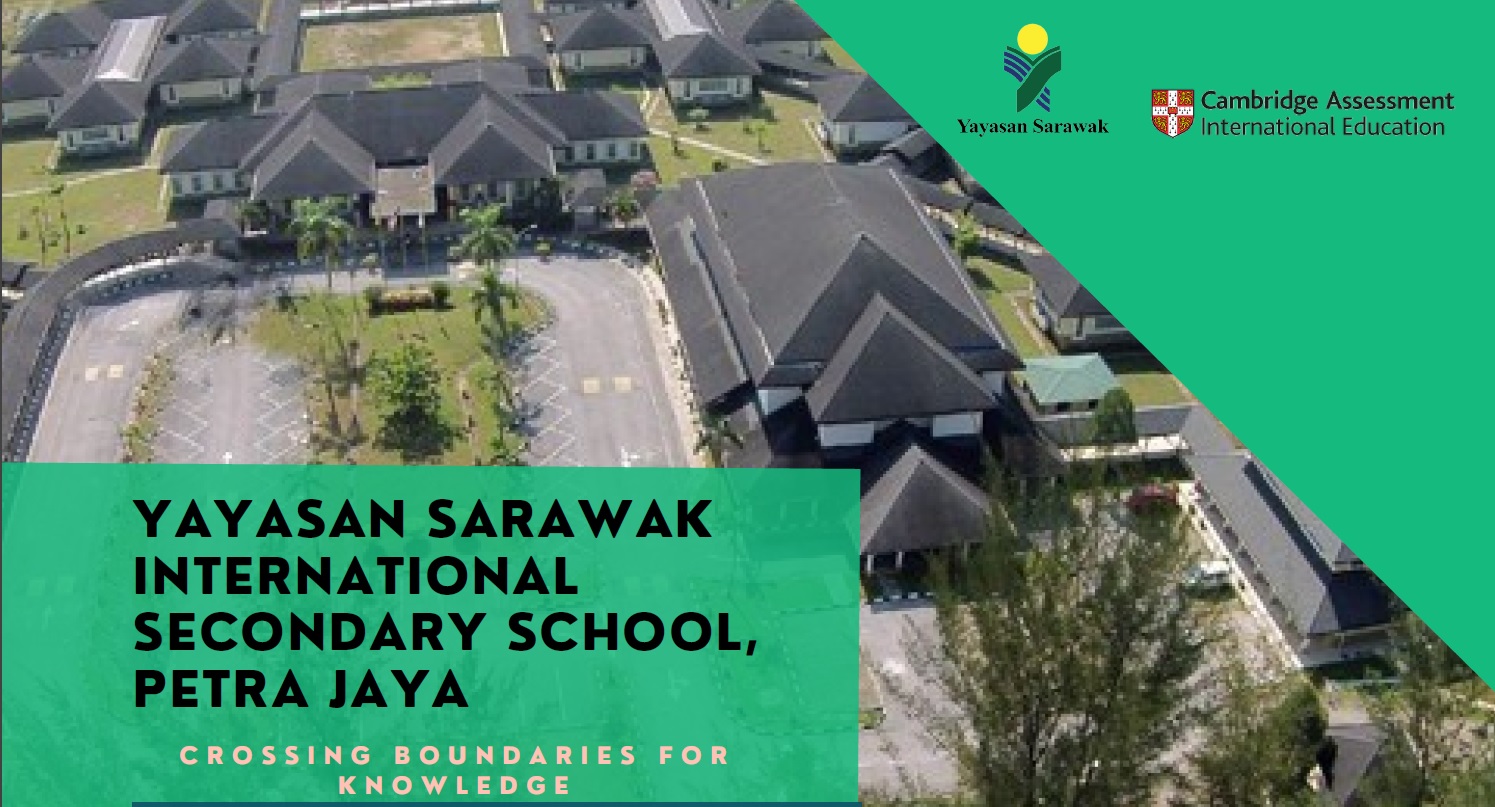
Photo from the Yayasan Sarawak International Secondary School flyer.
KUCHING (May 24): The first Yayasan Sarawak International Secondary School has begun operations in Petra Jaya.
Minister for Education, Innovation and Talent Development Datuk Roland Sagah Wee Inn said the school began last month with a pioneer intake of 111 students.
“Out of these, we have 80 boarders and 31 day-scholars, and 60 per cent of the students are from the bottom 40 per cent income (B40) household group, 30 per cent form middle 40 per cent (M40) group, and 10 per cent from the top 20 per cent income (T20) group,” he said in his ministerial winding up speech in the State Legislative Assembly (DUN) today.
Sagah said the students have to sit for an entrance assessment test to qualify for placement and the state government has offered full scholarships to students from the B40 group.
He said students from the M40 and T20 groups pay a minimal monthly fee.
Sagah pointed out the uptake of placements at the school fell short of the targeted 200 students, mainly due to parents, especially those from rural areas, being reluctant to send their children to study in schools far away from home.
Nonetheless, he said the state government is working to set up Yayasan Sarawak International Secondary Schools in Semenggoh, Sibu, Miri, and Bintulu.
Separately he said some 650 Primary 3 school teachers will begin training for the dual-language programme (DLP) for Mathematics and Science on June 14.
He said the government will collaborate with the Batu Lintang Teacher Education Institute and Sarawak State Education Department to implement the programme, which was started three years ago.
“In addition, my ministry has also provided extra materials to support DLP Sarawak by producing teacher guidebooks and student activity books. These materials have been delivered to all the schools,” he said.
Sagah said the training previously covered all primary school teachers teaching Science and Mathematics in English for Primary 1 and 2.
He pointed out it was often a misconception that DLP entailed teaching Mathematics and Science in both Bahasa Malaysia and English, as English was the sole medium of instruction.
“Whereas other subjects, such as History and Geography are taught in Bahasa Melayu,” he said.
On recruiting international students to study in Sarawak, Sagah said the state government had engaged with the Ministry of Higher Education, Ministry of Home Affairs, Immigration Department, and Education Malaysia Global Services (EMGS) in March to streamline the process of entry for international students to the state.
“My ministry is embarking on a programme to promote Sarawak as a regional higher education hub. It aims to emulate the success of ‘Study UK’ and ‘Study Melbourne’ in attracting students,” he said.
Sagah said the state’s ‘Study Sarawak’ programme will complement and enhance student services offered by education institutions in Sarawak through digital marketing, data sharing, student events, and promotions.
He added there currently 99 technical and vocational education and training (TVET) institutions across the state, of which 58 are public institutions.
On research and development, the minister said Sarawak had provided research grant support amounting to RM13.286 million for new and emerging fields of research.
The council had awarded RM500,000 for rabies diagnostic research, RM2.895 million for 2021 SARS-COV2 Serology study, and RM800,000 to 2021 SBC-SRDC SARS Biotherapeutics.
Grants worth RM1.993 million were also awarded for thematic research programmes, namely ‘Waging War Against Anti-Microbial Resistance’ and ‘Engkabang, the Wonders of Sarawak’.
In driving Sarawak’s bioeconomy, Sagah said the Sarawak Bioindustrial Park project was initiated to catalyse the state’s own bioindustry and it will focus on Bioactives, Biohealth, Biomaterials, Bioenergy, and Bioenvironmental.
A total of 26 out of the 100 acres have been allocated for the centre in the greater Samarahan industrial area, with earthworks expected to begin in July and construction to start in the fourth quarter of this year.
For the Sarawak Infectious Disease Centre, the minister said earthworks are scheduled to start this month with construction beginning in 2023.
The master plan for the centre, located next to the Sarawak Heart Centre, is expected to be completed by September.
